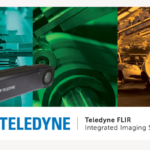ASIA ELECTRONICS INDUSTRYYOUR WINDOW TO SMART MANUFACTURING
Teledyne Brings Innovative Tech in its Latest Module
Teledyne e2v, a Teledyne Technologies company and global innovator of imaging solutions has introduced Optimom™ 5D turnkey imaging module.
Specifically, the new imaging module features the recently announced Topaz5D™ image sensor, a compact board, standard connector, and a pre-assembled lens. This comprehensive board-level vision extension seamlessly integrates full-HD 2D vision with the generation of 3D depth data. Moreover, it excels in challenging light conditions enabling the delivery of 3D objects or human visualization based on the detected contrast.

Smart Factories, Robotics and More
Teledyne e2v’s Optimom 5D imaging module features an innovative 2 Megapixel resolution, 2.5 µm global shutter pixel image sensor with unique angular sensitive pixels. It is the first commercially available module to affordably offer this new type of 3D vision technology. With a compact 25x25mm footprint and low power consumption, it includes a fast lens (45° horizontal field of view). Moreover, it operates from 40cm to 140cm.
Depth data processing generates detailed 3D depth maps and can see through sheets of glass or transparent organic material (e.g. plexiglass or plastic bottles). In addition, performing real-time 3D depth map processing is possible using dedicated Software Development Kits run on a host processor.
Optimom 5D excels in diverse operating and lighting conditions. Specifically, it suits applications such as smart factories and industrial robotics (including AMR’s), logistics, and warehouse automation. Moreover, it also suits 3D facial modeling for anti-spoofing, and many other applications. Unlike stereoscopy, it avoids optical occlusion at short distances. Optimom 5D also comes fully calibrated for its operating range, ensuring easy setup for the end-user.
Meanwhile, Laurent Appercel, Senior Marketing Manager at Teledyne e2v said, “Optimom 5D marks a significant advancement in the adoption of angular sensitive pixel technology. As a turnkey 3D vision solution. In addition, it features a standard MIPI-CSI2 interface and requires no additional calibration. In real-time, this module provides sharp 2D full-HD images (in mono or color) alongside contrast-based 3D depth maps, all at 30 frames per second with minimal latency.”
25 September 2024




